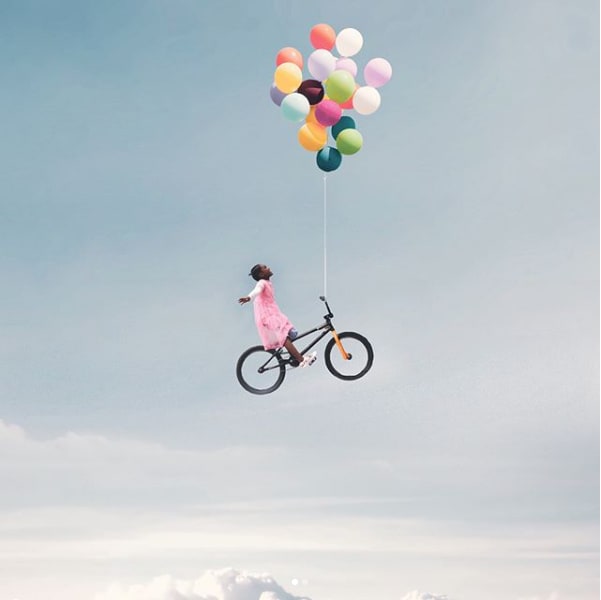These artists have visualized the dreams of refugee children

Artists are attempting to capture their hopes and highlight why they moved to Europe. Image: REUTERS/Thomas Mukoya

Get involved with our crowdsourced digital platform to deliver impact at scale
Stay up to date:
Migration
Seven year-old Marianne’s biggest dream is to own her own bike one day.
“Maybe then, if I bike really fast, I will be able to fly,” she says.
Marianne, who was born in Somalia but now lives in Berlin, is one of millions of children who fled their homes to start a new life in Europe.
She took part in a new UNHCR project, The Dream Diaries, which aims to illustrate the hopes and dreams of children who have sought refuge in Europe.

In the Netherlands, Manaal dreams of being an air stewardess to "be able to travel, see Paris and have butterflies" in her stomach.
Like Marianne, Manaal is a refugee from Somalia. She is living in Amsterdam. “I have only been in an airplane once and that is when we arrived here from Somalia,” she says.

Visualizing children’s dreams
Over the course of 16 days, Humans of Amsterdam photographer Debra Barraud and her colleague Benjamin Heertje, Dutch graphic designer Annegien Schilling and film-maker Kris Pouw journeyed more than 7,000 km through five European countries to capture the dreams of children who have fled war and persecution in Syria, Afghanistan, Somalia and elsewhere.
Their stories make up the Dream Diaries.
“Once we had gathered their stories and dreams, we created an image to symbolize their realization,” explains Barraud.
“Through the project, we saw the strength of these children and how with the right support they can achieve anything.”
Half of refugees are children

Unaccompanied or separated children, mainly from Afghanistan and Syria, made some 75,000 asylum applications in 70 countries during that year. Approximately one third of people seeking asylum in Germany in 2015 and 2016 were children and young people.
“The general tone of pictures of people who are refugees is very sad and hopeless and almost depressing. I thought it was interesting that we created pictures that gave people hope,” says Schilling, the graphic designer on the project.
Lifting spirits
One aim of the Dream Diaries project is to draw attention to the UNHCR’s global petition, which calls for refugees to be given safety, education and opportunities as soon as they arrive in their new country.
But the project also aimed to bring hope to the children.

“I have a poor memory so I don’t really remember much of our journey to Switzerland but I do remember my first day in school here,” says Roussel, a Syrian refugee.
“Everyone spoke French and the only thing I knew how to say was, ‘Bonjour’.”
“When I am alone in my room my favourite thing to do is dancing. I also love dancing with my sisters and friends. When we are grumpy or sad we dance. It lifts our spirits.”
To read more about the project by @humansofAmsterdam and @Fetching_tigerss visit www.unhcr.org/dream-diaries.html
Don't miss any update on this topic
Create a free account and access your personalized content collection with our latest publications and analyses.
License and Republishing
World Economic Forum articles may be republished in accordance with the Creative Commons Attribution-NonCommercial-NoDerivatives 4.0 International Public License, and in accordance with our Terms of Use.
The views expressed in this article are those of the author alone and not the World Economic Forum.
Related topics:
The Agenda Weekly
A weekly update of the most important issues driving the global agenda
You can unsubscribe at any time using the link in our emails. For more details, review our privacy policy.
More on Arts and CultureSee all
Joseph Fowler and Amilcar Vargas
April 18, 2024
Robin Pomeroy and Sophia Akram
April 8, 2024
Faisal Kazim
April 3, 2024
Robin Pomeroy and Linda Lacina
March 28, 2024






